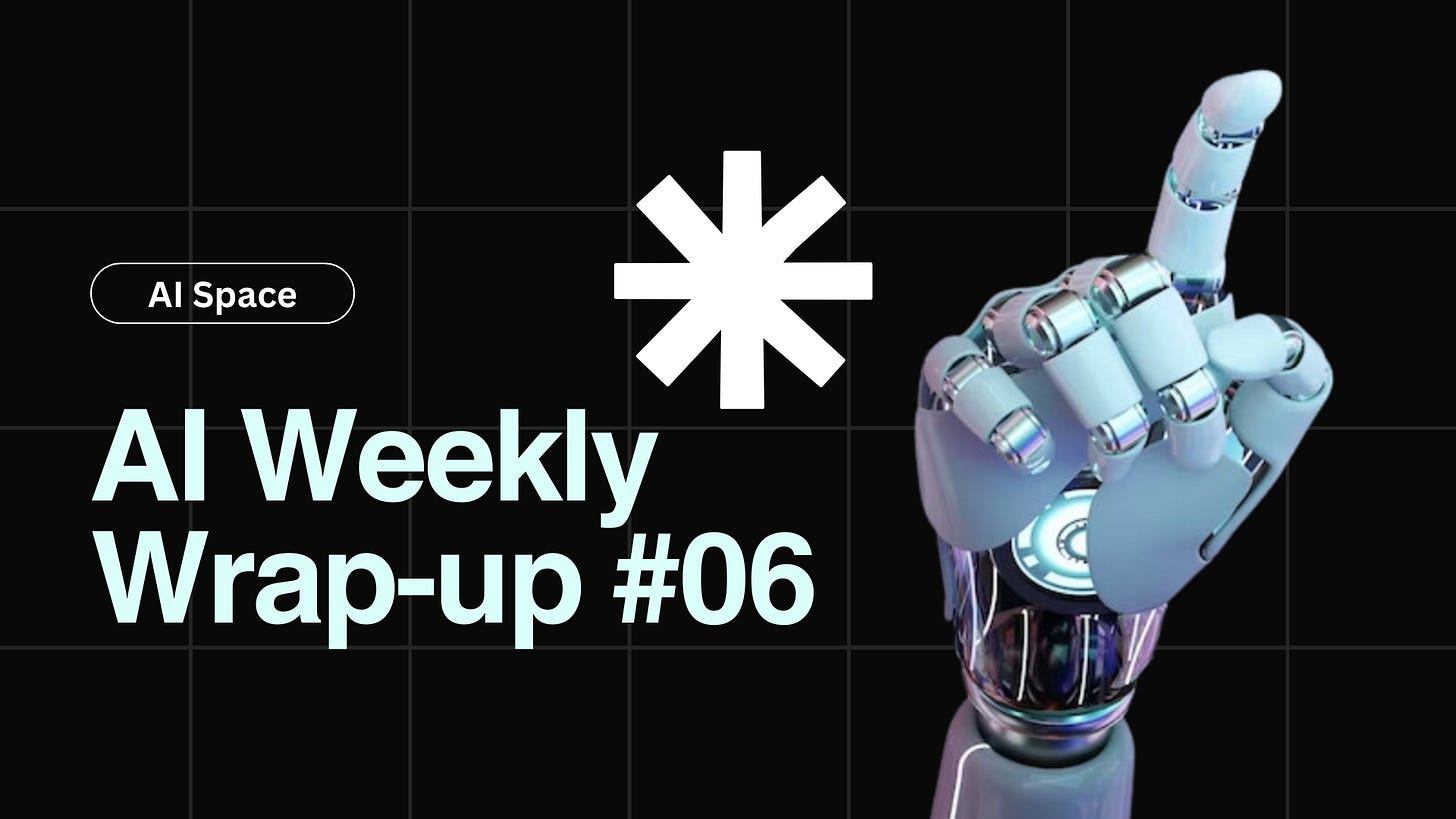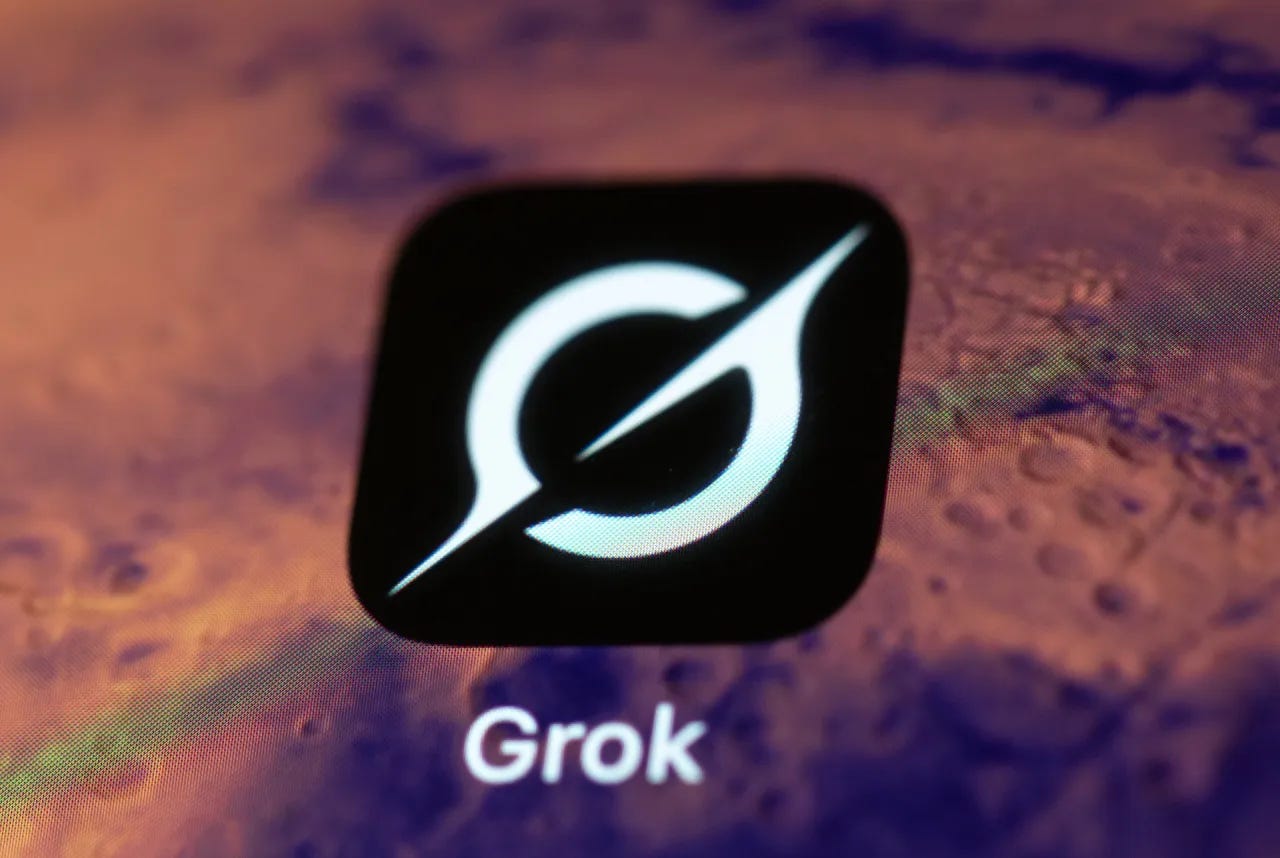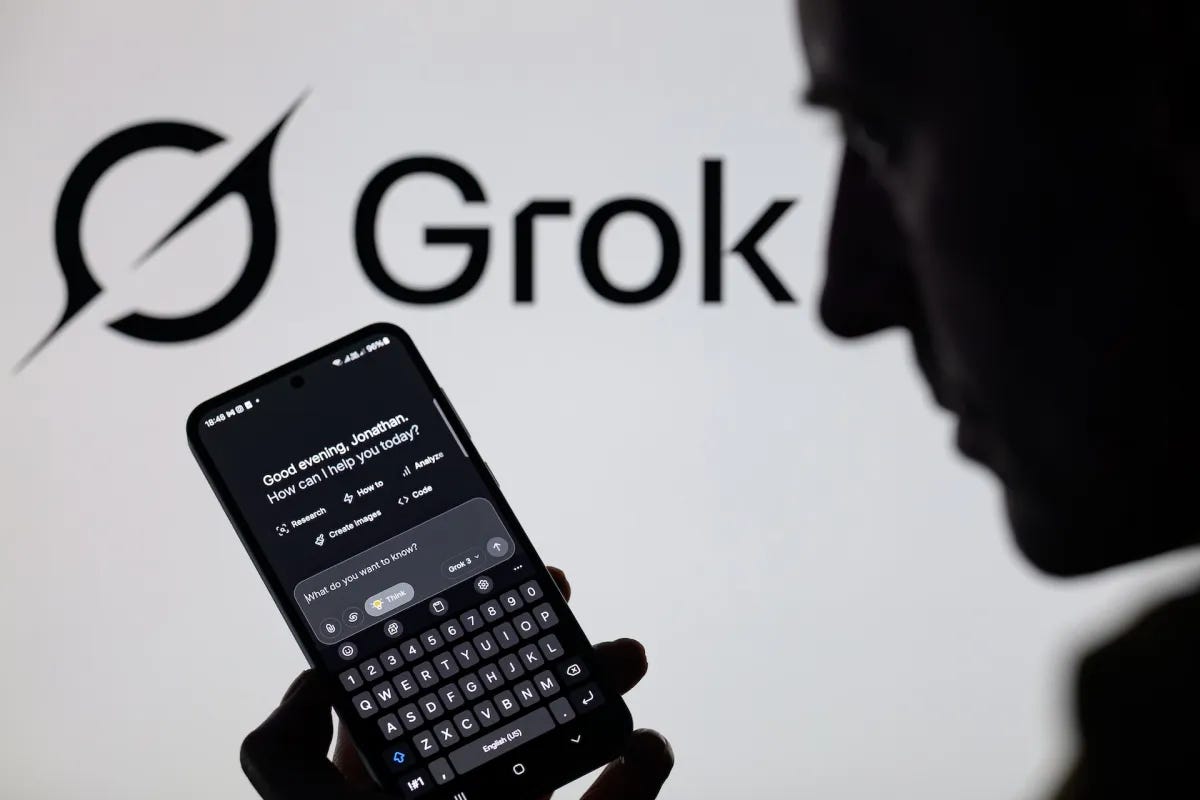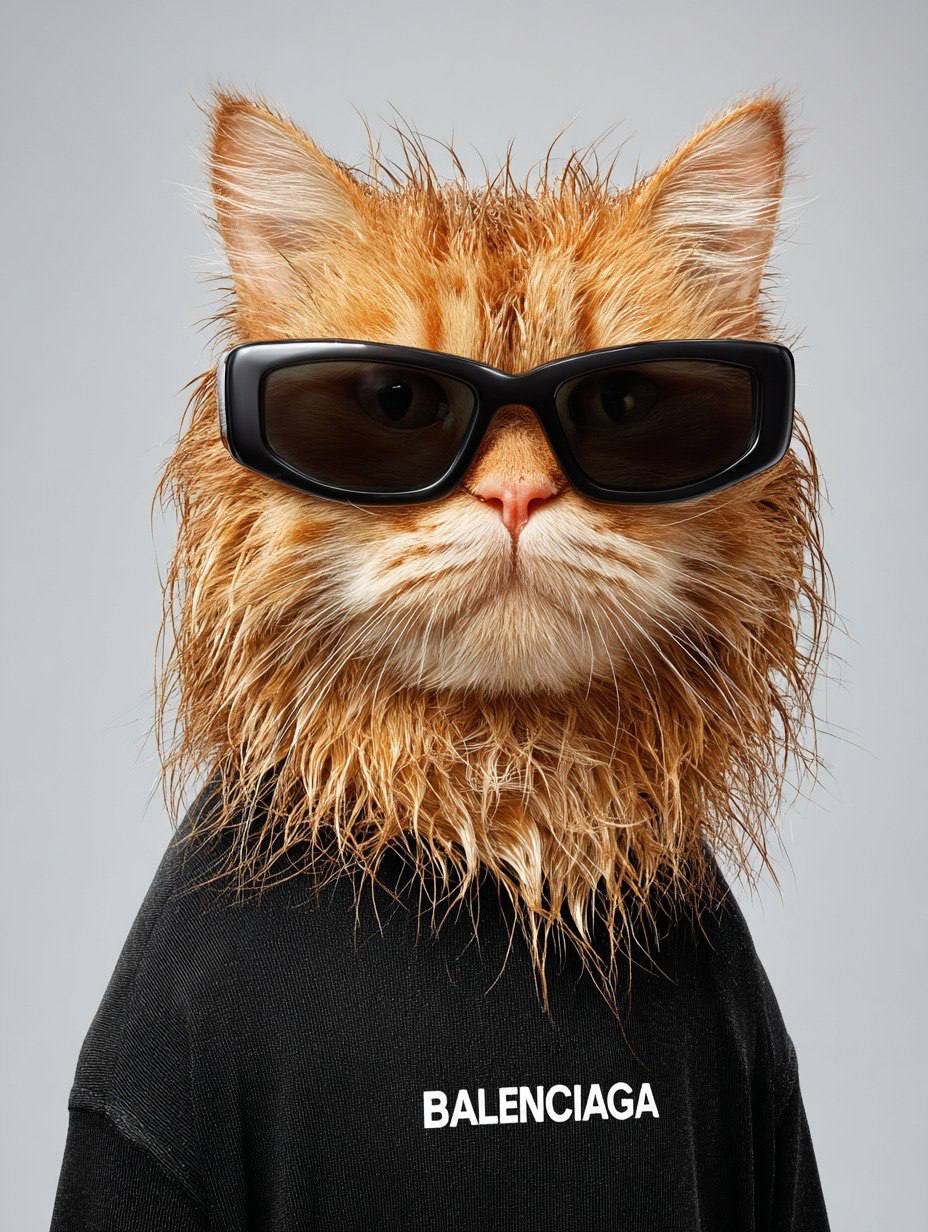AI Weekly Wrap-up #06 – By AI Space
From Musk’s Grok drop to Meta’s Midjourney bet — this week in AI.
Hola 👋, AI Enthusiasts.
It’s been another rollercoaster in the AI world. Elon Musk dropped a bombshell, officially open-sourcing Grok 2.5, putting more of xAI’s tech into the wild. Meanwhile, thousands of old Grok chats just became searchable on Google raising both curiosity and a few eyebrows.
Over in Big Tech, Meta is teaming up with Midjourney to co-build next-gen image and video models, a move that could reshape the creative AI landscape. At Amazon, AGI Labs’ chief is defending his unusual “reverse acquihire” strategy, while Coinbase’s CEO stirred debate after revealing he fired engineers who didn’t dive into AI immediately.
And because we can’t end without some fun don’t miss today’s Image Prompt of the Day, perfect for sparking a little weekend creativity.
Let’s dive into the week’s top AI stories.
In today's AI Weekly wrap-up:
Elon Musk says xAI has open sourced Grok 2.5.
Amazon AGI Labs chief defends his reverse acquihire.
Meta partners with Midjourney on AI image and video models.
Coinbase CEO explains why he fired engineers who didn’t try AI immediately.
Thousands of Grok chats are now searchable on Google.
Image Prompt of the Day.
1. Elon Musk says xAI has open sourced Grok 2.5
Elon Musk’s xAI has open-sourced its Grok 2.5 model by releasing the weights on Hugging Face, calling it last year’s best model. Musk also confirmed that Grok 3 will be open-sourced in about six months.
The release comes with strict licensing rules developers can use Grok 2.5 for experimentation but cannot train or enhance other AI models with it. This move highlights xAI’s push for more openness compared to its rivals.
What is the News About:
xAI has released Grok 2.5 model weights publicly on Hugging Face.
Elon Musk said Grok 3 will also be open-sourced in the next six months.
The license restricts using the model for training or improving other AIs.
The move reflects xAI’s strategy of transparency in AI development.
Grok 2.5 is described as xAI’s top model from last year, now shared for experimentation.
2. Amazon AGI Labs chief defends his reverse acquihire
David Luan, former Adept CEO and now head of Amazon’s AGI Lab, defends Amazon’s "reverse acquihire" of his startup by saying it's "perfectly rational" for companies to pool talent and computing power to tackle big AI challenges.
He emphasizes that building AGI requires "two-digit billion-dollar clusters" something only a tech giant like Amazon can realistically provide rather than turning Adept into a small-scale enterprise model seller.
What is the News About:
Luan sees himself as an “AI research innovator” rather than a deal-maker.
Amazon’s reverse acquihire meant hiring Adept’s leadership and licensing its technology instead of fully buying the company.
He says smaller startups can't chase AGI they lack the multi-billion-dollar compute infrastructure needed.
The move reflects Amazon’s strategy to build critical mass both talent and compute to push AI forward.
Luan hoped to avoid limiting Adept to enterprise-focused small models, opting for Amazon’s broader resources instead.
3. Meta partners with Midjourney on AI image and video models
Meta has entered a licensing and technical collaboration with AI powerhouse Midjourney, integrating its image and video generation “aesthetic technology” into future Meta models and products. This marks a shift from developing solely in-house tools to leveraging third-party expertise.
The move supports Meta’s broader “all-of-the-above” strategy combining top talent, compute infrastructure, and industry partnerships to compete with rivals like OpenAI and Google in generative AI.
What is the News About:
Meta will license Midjourney’s AI image and video generation technology for its own models and products.
The agreement includes a technical collaboration between the companies’ research teams.
This move comes as Meta’s internal tools like Imagine and Movie Gen fall behind competitors such as Google’s Veo 3 and OpenAI’s Sora.
Meta’s strategy merges internal capabilities with licensed external technologies to enhance visual quality and user engagement.
Midjourney remains independent and self-funded; its partnership with Meta is purely collaborative.
4. Coinbase CEO explains why he fired engineers who didn’t try AI immediately
Coinbase CEO Brian Armstrong mandated that all engineers onboard AI coding tools like GitHub Copilot and Cursor within a week, without requiring daily use only initial setup.
Those who didn’t comply or offer a valid reason faced a Saturday meeting and, in some cases, termination.
Armstrong defended the aggressive push, saying it made clear that AI adoption was non-negotiable. As a result, about 33% of Coinbase’s code is now written with AI, with a target of reaching 50% by the end of the quarter.
What is the News About:
Coinbase required engineers to onboard AI tools like Copilot and Cursor within one week.
Those who failed to comply and lacked a good excuse were fired after a Saturday meeting.
The abrupt directive was Armstrong’s response to projections that AI adoption would take months.
Now, 33% of code at Coinbase is AI-generated, with a goal of 50% by quarter-end.
Monthly “AI Speed Runs” were introduced so teams share creative ways they've integrated AI tools.
5. Thousands of Grok chats are now searchable on Google
Hundreds of thousands of conversations with Grok, Elon Musk’s xAI chatbot, have become publicly accessible because the “share” button creates unique URLs that are being indexed by search engines like Google, Bing, and DuckDuckGo.
Many users were completely unaware their private chats were now searchable online.
These shared chats include disturbing and sensitive content such as instructions on bombmaking, self-harm methods, drug synthesis, and even a plan for assassinating Musk raising serious red flags about privacy, safety, and poor design in AI tools.
What is the News About?
Chatbot Grok’s “share” feature generates URLs that are automatically indexed by search engines, exposing user conversations online.
Over 300,000 to 370,000 Grok chats have been found searchable, despite users not expecting public access.
Exposed chats contain sensitive material including medical advice, mental health issues, explicit content, and illicit instructions.
xAI’s posted terms explicitly disallow harmful content, yet the safety mechanisms failed to prevent these disclosures.
This incident mirrors earlier privacy mishaps with other AI services like ChatGPT’s share feature, highlighting a systemic oversight in chatbot design.
6. Image Prompt of the Day
Prompt: Cool ginger cat with spiky wet hair, wearing black sunglasses and a [BRAND] t-shirt with [LOGO/DESIGN], front view, neutral background, high detail, realistic photography







